เพาเวอร์แอมป์ YAMAHA
แอมป์พลิไฟเออร์ Yamaha
แนะนำเกี่ยวกับเพาเวอร์แอมป์ Yamaha
Yamaha Corporation เป็นหนึ่งในผู้ผลิตอุปกรณ์ดนตรีและเครื่องเสียงที่มีชื่อเสียงมากที่สุดในโลก ด้วยประวัติศาสตร์ยาวนานและความเชี่ยวชาญในการสร้างสรรค์ผลิตภัณฑ์ที่มีคุณภาพสูง เพาเวอร์แอมป์ Yamaha เป็นหนึ่งในผลิตภัณฑ์ที่ได้รับความนิยมอย่างมากในตลาดเครื่องเสียงระดับมืออาชีพและบ้าน บทความนี้จะพาคุณสำรวจประวัติศาสตร์ เทคโนโลยี และรุ่นต่างๆ ของเพาเวอร์แอมป์ Yamaha เพื่อให้คุณเข้าใจว่าทำไมพวกเขาถึงเป็นที่นิยมในวงการ
ประวัติของ Yamaha Corporation
Yamaha Corporation ก่อตั้งขึ้นในปี 1887 โดย Torakusu Yamaha โดยเริ่มต้นจากการผลิตเปียโนและออร์แกน จากนั้นบริษัทได้ขยายธุรกิจไปยังอุตสาหกรรมดนตรีและเครื่องเสียงด้วยการพัฒนาและผลิตเครื่องดนตรีอิเล็กทรอนิกส์และอุปกรณ์เสียงมากมาย เพาเวอร์แอมป์ของ Yamaha ได้รับการยอมรับอย่างกว้างขวางจากการที่มีคุณภาพเสียงที่ยอดเยี่ยมและความทนทานสูง
นวัตกรรมเทคโนโลยีเทคโนโลยี EEEngineหนึ่งในเทคโนโลยีที่โดดเด่นของ Yamaha คือ EEEngine (Energy Efficient Engine) ซึ่งเป็นเทคโนโลยีที่ช่วยเพิ่มประสิทธิภาพการทำงานของเพาเวอร์แอมป์ โดยการลดการใช้พลังงานและการปล่อยความร้อน EEEngine ใช้การผสมผสานระหว่างวงจรการขยายเสียง Class AB และ Class D เพื่อให้ได้คุณภาพเสียงที่ดีและประสิทธิภาพสูง เทคโนโลยี Class DYamaha ใช้เทคโนโลยีการขยายเสียงแบบ Class D ในหลายรุ่นของเพาเวอร์แอมป์ ซึ่งมีประสิทธิภาพสูงในการแปลงพลังงานเป็นสัญญาณเสียง ทำให้มีขนาดกะทัดรัด น้ำหนักเบา และมีประสิทธิภาพการทำงานที่ดี เทคโนโลยีนี้ยังช่วยลดความร้อนที่เกิดขึ้น ทำให้เพาเวอร์แอมป์สามารถทำงานได้เป็นเวลานานโดยไม่เกิดความร้อนเกิน DSP (Digital Signal Processing)เพาเวอร์แอมป์ Yamaha หลายรุ่นมาพร้อมกับระบบ DSP (Digital Signal Processing) ที่ช่วยปรับแต่งเสียงให้เหมาะสมกับการใช้งานต่างๆ โดยมีฟังก์ชันเช่น การปรับ EQ, ควบคุมการตัดเสียง, การลดเสียงสะท้อน, และการปรับแต่งเสียงอื่นๆ DSP ช่วยให้ผู้ใช้สามารถปรับแต่งเสียงได้อย่างละเอียดและแม่นยำ รุ่นที่นิยมของเพาเวอร์แอมป์ YamahaYamaha P-SeriesP-Series เป็นรุ่นที่ได้รับความนิยมสูงสุดของ Yamaha ด้วยความคุ้มค่าและประสิทธิภาพสูง มีหลายรุ่นที่เหมาะสำหรับการใช้งานที่หลากหลาย เช่น P3500S, P5000S และ P7000S เพาเวอร์แอมป์ในซีรีส์นี้มีความทนทานสูงและสามารถใช้งานได้ในสถานการณ์ต่างๆ ทั้งในระบบเสียง PA, การติดตั้งเสียงในสถานที่ และการใช้ในสตูดิโอ Yamaha PX-SeriesPX-Series เป็นรุ่นที่เน้นเทคโนโลยีขั้นสูง ด้วยการผสานการทำงานของเทคโนโลยี Class D และ DSP เพาเวอร์แอมป์ในซีรีส์นี้มีฟังก์ชันการปรับแต่งเสียงที่หลากหลาย เช่น การปรับ EQ, การคุมการตัดเสียง, และการตั้งค่าโปรไฟล์เสียงที่เหมาะสมกับการใช้งานต่างๆ PX-Series เหมาะสำหรับการใช้งานในระบบเสียง PA และการติดตั้งเสียงที่ต้องการคุณภาพเสียงสูงและการควบคุมที่แม่นยำ Yamaha T-SeriesT-Series เป็นเพาเวอร์แอมป์ที่ออกแบบมาสำหรับการใช้งานในสตูดิโอและระบบเสียงบ้าน มีขนาดกะทัดรัดและการออกแบบที่สวยงาม มีหลายรุ่นที่เน้นคุณภาพเสียงที่ยอดเยี่ยม เช่น T5N, T3N และ T2N เพาเวอร์แอมป์ในซีรีส์นี้มีการใช้เทคโนโลยีขั้นสูงเพื่อให้ได้คุณภาพเสียงที่ดีที่สุด Yamaha XMV SeriesXMV Series เป็นรุ่นที่ออกแบบมาสำหรับการติดตั้งเสียงในสถานที่ต่างๆ เช่น โรงเรียน, โบสถ์, และศูนย์การประชุม เพาเวอร์แอมป์ในซีรีส์นี้มีหลายช่องสัญญาณและการปรับแต่งเสียงที่หลากหลาย เช่น XMV8280 และ XMV8140 มีฟังก์ชันการเชื่อมต่อที่สะดวกสบายและการควบคุมจากระยะไกลผ่านเครือข่าย การใช้งานเพาเวอร์แอมป์ Yamahaเพาเวอร์แอมป์ Yamaha ถูกใช้งานในหลากหลายสถานที่เนื่องจากความหลากหลายและความเชื่อถือได้ของพวกเขา การใช้งานทั่วไปได้แก่:
เทคนิคการใช้งานและการบำรุงรักษาการติดตั้งและการตั้งค่า
การบำรุงรักษา
สรุปเพาเวอร์แอมป์ Yamaha เป็นหนึ่งในเครื่องเสียงที่ได้รับความนิยมมากที่สุดในตลาด ด้วยประวัติศาสตร์ที่ยาวนานและนวัตกรรมเทคโนโลยีที่ล้ำหน้า เพาเวอร์แอมป์ของ Yamaha มอบประสิทธิภาพที่เชื่อถือได้และคุณภาพเสียงที่ยอดเยี่ยม สำหรับการใช้งานในหลากหลายสถานการณ์ ไม่ว่าคุณจะเป็นวิศวกรเสียง ผู้จัดงาน หรือผู้หลงใหลในเสียง เพาเวอร์แอมป์ Yamaha จะเป็นการลงทุนที่คุ้มค่าสำหรับระบบเสียงของคุณ |

Stereo เพาเวอร์แอมป์ YAMAHA |
|||
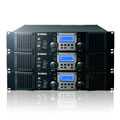 |
YAMAHA TXn Series Intelligent, network-ready touring amplifiers with onboard DSP and flexible I/O options. |
||
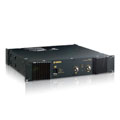 |
YAMAHA Tn Series Ideal touring amplifiers with reliable 2-ohm drive capability for line arrays |
||
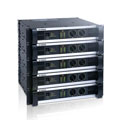 |
YAMAHA PC-1N Series Networkable power amplifiers that achieve superior reproduction quality with remarkably low power consumption. |
||
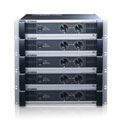 |
YAMAHA XP Series With adjustable input sensitivity and voltage characteristics, these power amplifiers are ideal for installations. |
||
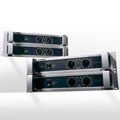 |
YAMAHA P-S Series ดูเว็บ Versatile I/O and Yamaha Speaker Processing in power amplifiers that deliver high performance as well as economy. |
||
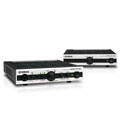 |
YAMAHA MA2030, PA2030 Lo-Z/Hi-Z switchable compact Class-D amplifiers (Lo-Z: 30W x2ch, Hi-Z: 60W x1ch). A smart simple solutions for any small scale applications, where providing background music or requiring a microphone. |
||
Multi-Channel Power Amplifiers |
|||
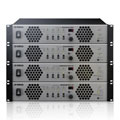 |
YAMAHA XMV Series XMV Series multi-channel power amplifiers combine Class-D efficiency with features designed specifically to benefit commercial installation sound systems. |
||
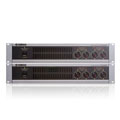 |
YAMAHA XM Series 4-channel power amplifiers that are an excellent choice for installations. |
||
 |
YAMAHA IPA8200 Highly efficient Class-D amplifier brings 8 x 200W/ch from a compact 2U body. |
||
Distribution Power Amplifiers |
|||
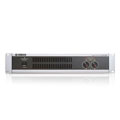 |
XH200 This distribution amplifier delivers 200 watts + 200 watts and is compatible with 100V and 70V lines. |
||
Amplifier Control Devices |
|||
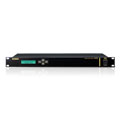 |
ACD1 This Amp Control Device connects Tn, PC-1N, XP, XM and XH series amplifiers to a computer running Yamaha's Amp Editor amplifier control and monitoring software. |
||
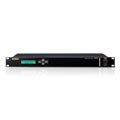 |
ACU16-C This amp control unit allows control of networkable amplifiers from a computer, and includes CobraNet™ to 16-channel analog audio interface functionality. |
||
เพาเวอร์แอมป์ YAMAHA: พลังขับเสียงที่เหนือชั้นสำหรับงานติดตั้งและงานเสียงคุณภาพสูงเมื่อพูดถึงระบบเสียงคุณภาพสูง ไม่ว่าจะเป็นงานในสตูดิโอ, งานแสดงสด, งานติดตั้งในโรงแรม, หรือห้องประชุมขนาดใหญ่ เพาเวอร์แอมป์ ถือเป็นหัวใจสำคัญที่ช่วยขับเคลื่อนพลังเสียงให้มีความสมบูรณ์ และหนึ่งในแบรนด์ที่มีชื่อเสียงในด้านนี้คือ YAMAHA ซึ่งมีผลิตภัณฑ์เพาเวอร์แอมป์หลากหลายรุ่นที่ได้รับการยอมรับในวงการเครื่องเสียงทั่วโลก ในบทความนี้ เราจะมาทำความรู้จักกับ เพาเวอร์แอมป์ YAMAHA ว่ามีจุดเด่นอะไรบ้าง ทำไมจึงได้รับความนิยม และวิธีการเลือกใช้งานให้เหมาะสมกับความต้องการของคุณ คุณสมบัติเด่นของเพาเวอร์แอมป์ YAMAHA1. การออกแบบที่ทันสมัยและทนทานเพาเวอร์แอมป์ของ YAMAHA มีการออกแบบที่เน้นความทนทานและสามารถใช้งานได้ในระยะยาว โดยวัสดุที่ใช้ในการผลิตมีคุณภาพสูงและสามารถทนต่อการใช้งานหนักได้ นอกจากนี้ยังมีดีไซน์ที่ทันสมัย ไม่เพียงแต่ช่วยเพิ่มความสวยงามให้กับการติดตั้ง แต่ยังเพิ่มความสะดวกในการใช้งานและการบำรุงรักษาอีกด้วย 2. เทคโนโลยี EEEngine: ประหยัดพลังงานหนึ่งในเทคโนโลยีที่โดดเด่นของ YAMAHA คือ EEEngine (Energy Efficient Engine) ซึ่งเป็นระบบขยายเสียงที่ประหยัดพลังงาน แต่ยังคงประสิทธิภาพการขยายเสียงสูงสุด เทคโนโลยีนี้ช่วยลดการสูญเสียพลังงานและความร้อนที่เกิดขึ้นในเพาเวอร์แอมป์ ทำให้สามารถใช้งานได้ยาวนานโดยไม่เกิดความร้อนสะสม นอกจากนี้ยังช่วยลดค่าไฟฟ้าในระยะยาวสำหรับการใช้งานในโครงการขนาดใหญ่หรือการใช้งานในระยะยาว 3. คุณภาพเสียงที่ใสและทรงพลังเพาเวอร์แอมป์ของ YAMAHA ได้รับการออกแบบมาเพื่อให้ได้เสียงที่ใสและมีพลังขับสูงสุด โดยใช้วงจรขยายเสียงที่มีความละเอียดและมีการตอบสนองความถี่ที่กว้าง ตั้งแต่เสียงต่ำจนถึงเสียงสูง โดยไม่ทำให้เสียงเบลอหรือแตกพร่า แม้จะใช้งานในระดับกำลังขับที่สูงสุด ทำให้เสียงที่ออกมามีความชัดเจนและทรงพลัง เหมาะสำหรับการใช้งานในงานแสดงสด, คอนเสิร์ต, หรืองานที่ต้องการพลังเสียงในระดับมืออาชีพ 4. ฟังก์ชันการปรับแต่งที่หลากหลายเพาเวอร์แอมป์ YAMAHA มาพร้อมกับฟังก์ชันการปรับแต่งเสียงที่ครอบคลุมและง่ายต่อการใช้งาน เช่น ระบบปรับระดับความดัง, การเชื่อมต่อผ่าน XLR, TRS, หรือ RCA นอกจากนี้บางรุ่นยังรองรับการปรับ EQ แบบละเอียด และสามารถตั้งค่าแบบ parallel หรือ bridge เพื่อเพิ่มความยืดหยุ่นในการใช้งานตามความต้องการของผู้ใช้ 5. การป้องกันความเสียหายและระบบรักษาความปลอดภัยหนึ่งในจุดเด่นสำคัญของเพาเวอร์แอมป์ YAMAHA คือระบบรักษาความปลอดภัยที่มีมาให้ เช่น ระบบป้องกันความร้อนสูงเกินไป, ระบบป้องกันการลัดวงจร, และการตรวจสอบแรงดันไฟฟ้าที่ไม่เสถียร ซึ่งทั้งหมดนี้ช่วยให้การใช้งานเพาเวอร์แอมป์เป็นไปอย่างปลอดภัยและยืดอายุการใช้งานของเครื่อง รุ่นยอดนิยมของเพาเวอร์แอมป์ YAMAHAYAMAHA มีเพาเวอร์แอมป์หลายรุ่นที่เหมาะสำหรับการใช้งานในสภาพแวดล้อมที่หลากหลาย ไม่ว่าจะเป็นการใช้งานภายในบ้าน สตูดิโอ ห้องประชุม หรือสำหรับงานคอนเสิร์ตและอีเว้นท์ขนาดใหญ่ ตัวอย่างรุ่นยอดนิยมได้แก่: 1. YAMAHA PX SeriesPX Series เป็นเพาเวอร์แอมป์ที่ออกแบบมาเพื่องานติดตั้งและงานแสดงสดที่ต้องการพลังขับสูง โดยใช้เทคโนโลยี DSP (Digital Signal Processing) ที่สามารถปรับแต่งเสียงได้อย่างละเอียด มีระบบป้องกันความร้อนและการลัดวงจร นอกจากนี้ยังสามารถปรับแต่งการตั้งค่าเสียงผ่านหน้าจอ LCD ที่ใช้งานง่าย ทำให้ PX Series เป็นตัวเลือกที่ยอดเยี่ยมสำหรับผู้ที่ต้องการควบคุมเสียงอย่างมืออาชีพ 2. YAMAHA XMV SeriesXMV Series ถูกออกแบบมาเพื่อการใช้งานในงานติดตั้งเสียงแบบ Multi-zone หรือการขยายเสียงหลายโซนในสถานที่เดียว เช่น ห้างสรรพสินค้า, โรงแรม, หรือสถานที่ที่มีการแบ่งพื้นที่ในการใช้งานแยกต่างหาก XMV Series มีฟังก์ชันการควบคุมที่ละเอียดและการปรับกำลังขับที่เหมาะสมสำหรับงานติดตั้งที่ซับซ้อน 3. YAMAHA P-S SeriesP-S Series เป็นเพาเวอร์แอมป์ที่มีความเสถียรสูงและออกแบบมาให้มีน้ำหนักเบา แต่ยังคงประสิทธิภาพการขับเสียงที่ทรงพลัง เหมาะสำหรับงานติดตั้งที่ต้องการประหยัดพื้นที่และน้ำหนัก รวมถึงการขนย้ายที่สะดวกสบาย การเลือกเพาเวอร์แอมป์ YAMAHA ให้เหมาะสมกับการใช้งานในการเลือกเพาเวอร์แอมป์ YAMAHA ควรคำนึงถึงปัจจัยต่างๆ ดังนี้:
สรุปเพาเวอร์แอมป์ YAMAHA เป็นทางเลือกที่ยอดเยี่ยมสำหรับผู้ที่ต้องการระบบขยายเสียงคุณภาพสูง ด้วยคุณสมบัติที่ครบครัน เทคโนโลยีที่ทันสมัย และการออกแบบที่ทนทาน ทำให้สามารถใช้งานได้ในหลากหลายสภาพแวดล้อม ทั้งในงานแสดงสด, งานติดตั้งเชิงพาณิชย์, หรือในสถานที่ที่ต้องการพลังเสียงที่มีคุณภาพ |


